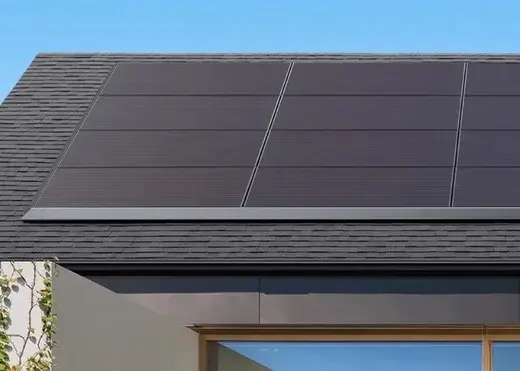Your Future Home: 10 Building Tips
- Erin Farnsworth
- Aug 12, 2024
- 4 min read
If you're embarking on the exciting journey of building a new home, you're in for a thrilling experience. To ensure your dream home becomes a reality without any hiccups, we've compiled a list of the 10 crucial considerations to keep in mind before breaking ground.
1. Budget Wisely

Break down your budget into categories such as construction costs, design fees, permits, landscaping, furnishings, and contingencies. A detailed breakdown helps you allocate funds appropriately.
Research Construction Costs: Research current construction costs in your area. Consult with builders, contractors, and industry experts to get accurate estimates for labor, materials, and other expenses.
Prioritize Must-Haves vs. Nice-to-Haves: Identify your non-negotiables and prioritize them in your budget. This ensures that essential features are accounted for, even if adjustments are needed in other areas.
Account for Future Costs: Anticipate future costs beyond the construction phase, such as maintenance, utilities, and property taxes. Understanding the long-term financial commitment is crucial for sustainable homeownership.
Regularly Review and Adjust: Throughout the construction process, regularly review your budget. Compare actual expenses to your initial estimates and adjust accordingly. This proactive approach helps you stay in control of your finances.
Energy Efficiency Investments: While budgeting, consider investments in energy-efficient features. Though they may have upfront costs, they can lead to long-term savings on utility bills, contributing to the overall financial sustainability of your home.
Explore Cost-Saving Measures: Work with your design and construction team to explore cost-saving measures without compromising quality. This might include value engineering, alternative materials, or adjusting design elements.
Permitting Costs: Factor in permitting costs. Educate yourself about the fees associated with acquiring necessary permits and complying with local building regulations.
2. Choose the Right Location

The location of your home is paramount. Evaluate factors like proximity to amenities, schools, work, view and overall neighborhood vibe. Don't forget to research future development plans in the area.
3. Hire the Right Team

Surround yourself with a team of professionals – architects, builders, and designers – who understand your vision. Check references, review portfolios, and ensure their previous projects align with your style and expectations.
4. Design for Your Lifestyle

Tailor the design to your lifestyle and future needs. Consider factors like family size, entertaining preferences, and any unique requirements. Think about long-term functionality and flexibility.
5. Understand Zoning Regulations

Familiarize yourself with local zoning regulations and building codes. This knowledge will guide your design choices and help avoid potential setbacks during the construction process.
6. Energy Efficiency and Sustainability

Integrate energy-efficient and sustainable features into your design. This not only benefits the environment but can also lead to long-term cost savings on utilities.
7. Prioritize Quality Materials

Invest in high-quality materials for durability and longevity. Consider the climate of your location and choose materials that can withstand the elements. Quality materials may have a higher upfront cost, but they often pay off in the long run by reducing maintenance and replacement expenses.
Flooring: Consider durable and easy-to-maintain flooring options like hardwood, ceramic tile, or engineered wood.
Roofing: Opt for high-quality roofing materials that provide good insulation and can withstand local weather conditions.
Windows and Doors: Invest in energy-efficient windows and doors to enhance insulation and reduce utility costs.
Cabinetry and Countertops: Choose materials for cabinets and countertops that not only match your aesthetic preferences but also offer durability and resistance to wear and tear.
8. Plan for Technology

Consider incorporating smart home technology into your design. Future-proof your home by planning for automation, security systems, and other technological advancements.
9. Be Realistic About Timelines

Construction projects often take longer than expected. Set realistic timelines and be prepared for potential delays due to weather, supply chain issues, or unforeseen challenges.
10. Stay Involved Throughout the Process

Regularly communicate with your construction team and be actively involved in the decision-making process. This ensures that your vision is accurately translated into the final product.
11. Choose the Right Contractor
Selecting the right contractor is a pivotal decision in the home-building process. Take the following steps to ensure you're partnering with the best:
Check References: Request and thoroughly check references from previous clients. This will provide insights into the contractor's work quality, communication skills, and reliability.
Verify Credentials: Ensure the contractor is licensed, bonded, and insured. This not only protects you but also indicates a commitment to professionalism.
Visit Previous Projects: If possible, visit homes the contractor has previously built. This allows you to assess the craftsmanship and attention to detail.
Transparent Communication: Choose a contractor who communicates clearly and openly. Transparency regarding costs, timelines, and potential challenges is essential for a successful partnership.
Understand the Team: Inquire about the contractor's team and subcontractors. A well-organized and experienced team contributes to a smoother construction process.
First impressions: The planning and building process is a lengthy and is personal process. Transparency is KEY! Your contractor and their team should be someone whom you can consider a friend when all is said and done.
Embarking on a custom home build is an exciting and rewarding journey. By carefully considering these aspects, you'll be well on your way to creating a home that not only meets your expectations but exceeds them.




Comments